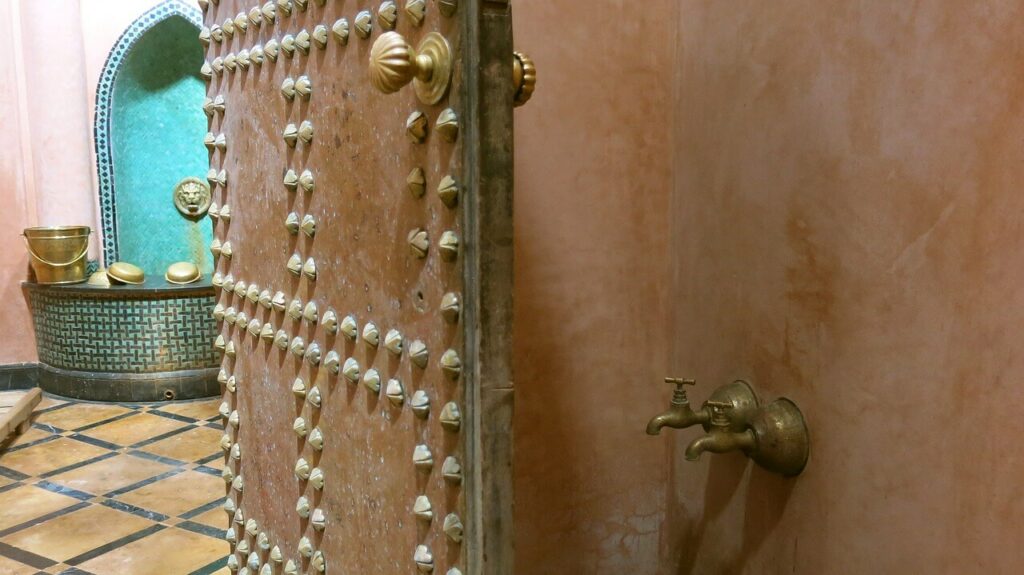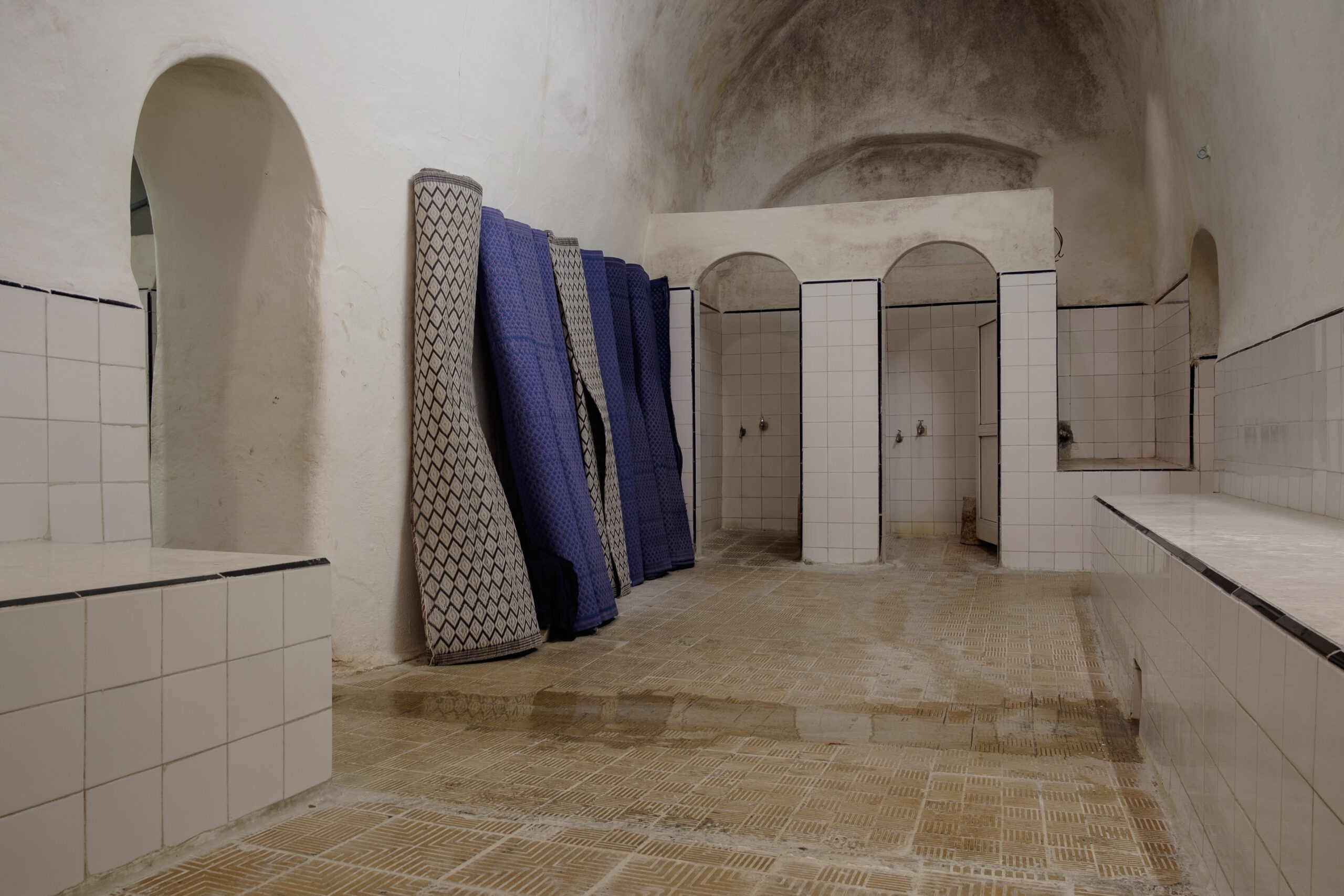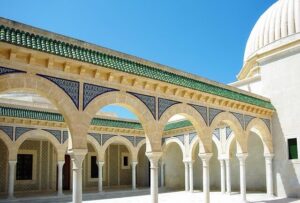Table of Contents
- The History of the Hammam
- The Regenerating Process of the Hammam
- Hospitality and Tradition of the Hammam in Tunisia
- Where to Find a Hammam in Tunisia
- Health and Wellness Benefits of the Hammam
- Tips for an Optimal Hammam Experience
The History of the Hammam: An Ancient Cultural Tradition
The Hammam, also known as the Turkish bath, is an ancient practice that dates back centuries and has roots in both Arab and Roman cultures. The word “Hammam” comes from the Arabic “حَمّام”, meaning “place of heat”. These public baths were used for hygienic, social, and cultural reasons. In Tunisian tradition, the Hammam represents much more than just a place to wash: it is an experience that engages the body, mind, and spirit.
Throughout history, the Hammam has become a symbol of wellness and cleanliness, as well as a social meeting place. People go to the Hammam not only to take care of their bodies, but also to share moments of socializing and conviviality. In the past, Hammams were often divided into sections for men and women, but today many facilities offer mixed spaces, creating a more inclusive environment.
In the Tunisian context, the Hammam is an important part of daily life, and you can find them in many historic cities like Tunis, Kairouan, and Sousse. Each city has its own characteristic Hammam, representing a corner of tradition and culture. Over the years, the Hammam has evolved into modern wellness centers, but it still retains its traditional spirit.
The Regenerating Process of the Hammam: Sauna and Turkish Bath
A visit to the Hammam begins with the heat ritual. The body is exposed to intense sauna heat, where the humidity and heat open the pores, preparing the skin for the subsequent treatments. The sauna is not just a physical treatment, but also a mental one: the intense heat helps relax the mind and body, eliminating the tension accumulated throughout the day.
Next, traditional black soap, a natural product made from olive oil, is applied and massaged into the skin. This soap is rich in antioxidants and helps purify the skin by removing impurities, leaving it soft. Black soap is also an excellent moisturizer, perfect for dry and dehydrated skin.
The highlight of the treatment is exfoliation, which is performed with the kessa scrub glove. This glove, made from horsehair bristles, is used to remove dead skin cells, stimulating blood circulation and promoting cell renewal. Exfoliation is an essential process for achieving smooth, glowing skin, and is one of the reasons why the Hammam is so appreciated.
In addition to exfoliation, many Hammams offer additional treatments such as clay wraps, face masks, and relaxing massages, which help complete the regenerating experience. These treatments are designed to nourish and hydrate the skin, leaving the body and mind in a state of complete wellness.
Hospitality and Tradition of the Hammam in Tunisia
The Hammam in Tunisia is an experience that goes beyond physical wellness: it is an opportunity to immerse yourself in Tunisian culture and learn about local traditions. Visitors to the Hammam have the chance to meet locals, who are generally very welcoming and happy to share stories and anecdotes about Tunisian culture. A visit to the Hammam thus becomes a moment of cultural exchange.
The facilities of Hammams are designed to offer an experience that respects tradition, while keeping an eye on modernity. Many Tunisian Hammams are located in ancient historic buildings, such as the medinas of important cities, which add a touch of charm and authenticity. The atmosphere in these places is unique, allowing you to fully immerse yourself in the local culture.
Moreover, the Hammam also represents an opportunity to experience Tunisian hospitality in a relaxed and informal environment. If you visit a Hammam, you can take advantage of social moments, talk with locals, and learn more about the traditions of the country.
Where to Find a Hammam in Tunisia
In Tunisia, Hammams are easy to find in many cities, both in historic centers and in more modern areas. However, some cities are particularly famous for their traditional Hammams. For example, the capital Tunis hosts Hammam Sidi Brahim, one of the oldest and most renowned in the city. Located in the heart of the Medina, Hammam Sidi Brahim offers an authentic experience, where wellness and tradition merge into one experience.
In addition, in Kairouan, one of the most historic cities in Tunisia, there is the Hammam Sidi Abid, which is equally famous for its beauty and centuries-old history. Other traditional Hammams can be found in cities such as Sousse, Monastir, and Mahdia, each with its own peculiarities and features.
Visiting one of these Hammams is a unique opportunity to discover Tunisian culture from a privileged perspective. If you want to have an authentic experience, don’t miss the chance to visit one of Tunisia’s most historic Hammams.
Health and Wellness Benefits of the Hammam
The Hammam offers numerous health and wellness benefits. The intense heat of the sauna helps open the pores, promoting the elimination of accumulated toxins in the body. This detoxification process is very helpful for improving blood circulation and revitalizing the skin, making it look healthier and more radiant.
Additionally, exfoliation treatments with the kessa glove stimulate blood flow and accelerate cell renewal. The skin becomes softer, smoother, and younger. The use of natural soaps and clay wraps helps nourish the skin, while massages improve muscle mobility and relieve pain and tension.
The Hammam is also an excellent form of mental relaxation. The heat and the peaceful atmosphere promote the release of endorphins, which are hormones that improve mood and reduce stress. After a Hammam session, you feel rejuvenated, both physically and mentally.
Tips for an Optimal Hammam Experience
To fully enjoy the Hammam experience, it’s important to follow a few simple tips:
- Hydrate well before and after the treatment to avoid dehydration caused by the heat.
- Wear comfortable clothing and bring a towel to cover yourself during the session.
- Allow your body to adjust to the heat and don’t rush through the sauna and exfoliation process.
- Take your time: the Hammam is a relaxation experience, so don’t rush and enjoy the tranquility of the place.






